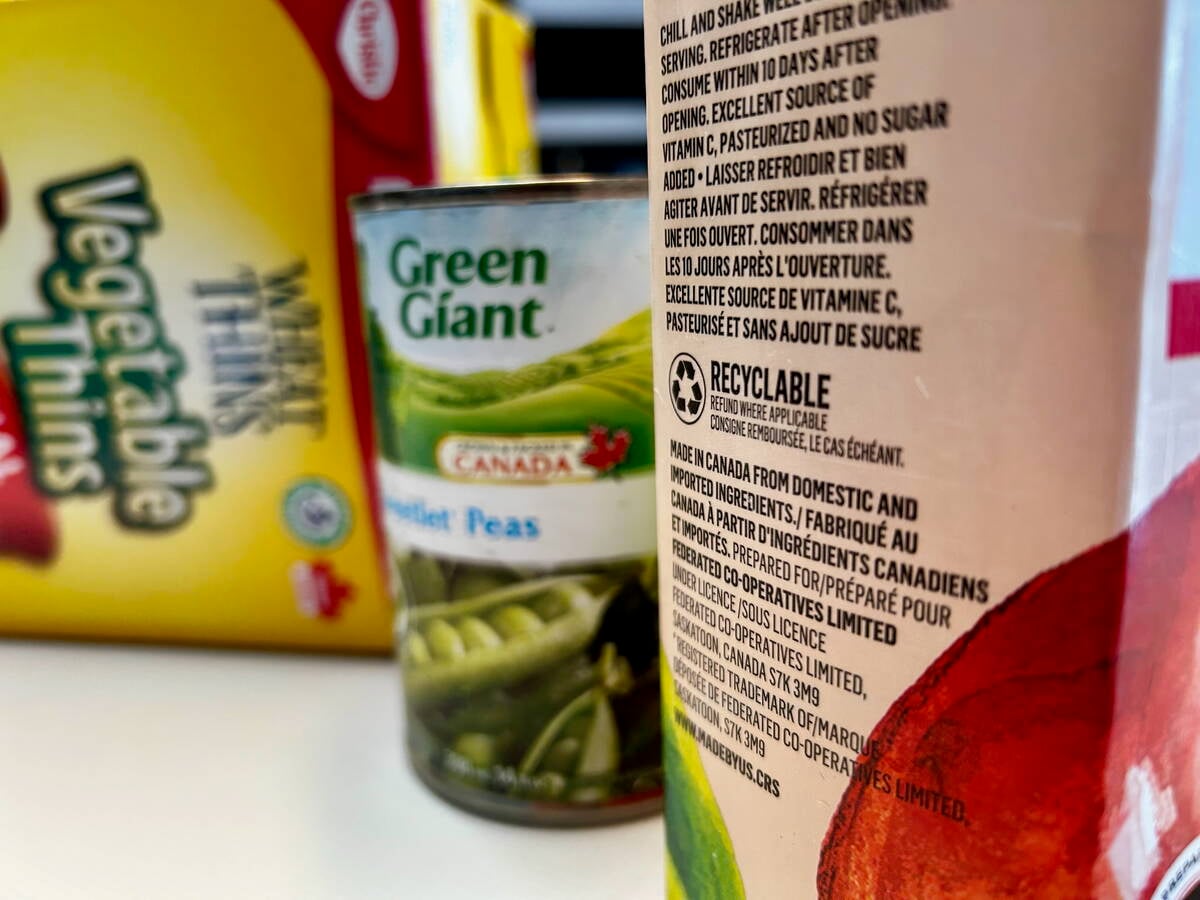Higher food and housing costs are squeezing low-income Canadians and the 4,100 food banks across Canada that try to help them, says a study released Nov. 1.
Even with the economic recovery, food bank use has risen 26 per cent since the start of the 2008 recession, Katherine Schmidt, executive director of Food Banks Canada, told an Ottawa news conference. More than 322,000 of those helped were children.
It is shocking that hundreds of thousands of Canadians need help from food banks each month to make ends meet, Schmidt added. The level of food bank use over the past three years has grown at an alarming rate and food banks are stretched to the limit.
Read Also

Unclear food labels hinder Canada’s ‘buy local’ surge
“Maple-washing” on Canadian food packaging makes label claims hard to keep straight and hurts both farmers and consumers trying to buy Canadian, economist says.
We need help right now, she continued. Both food banks and the people they are helping are under very high levels of stress. The situation is simply unsustainable.
The federal and provincial governments should take action so fewer people will need to resort to food banks, she said. Farmers and the food industry are generous with their donations.
More affordable housing would provide the biggest benefit because the families then would be able to buy sufficient food.
Her group s HungerCount 2011 survey also found that:
” 11 per cent of those receiving food each month 94,000 people are accessing a food bank for the first time,
” one in five individuals and families assisted by food banks have income from current or recent employment,
” 20 per cent of households helped are living on an old age or disability pension.
” half of households receiving food are families with children.
Other ways governments could help is by improving employment insurance for older workers who have lost their jobs and by helping ensure Canadian jobs are well-paying jobs. The economic recovery is in jeopardy, and far too many people continue to struggle to make ends meet.
Food banks aren t an urban phenomenon. In rural areas, 114,122 individuals or 13 per cent of the national total received food from food banks; 10 per cent of them were being helped for the first time, says the Foodbanks Canada study.
Food bank use in 2011 was 20 per cent higher than in 2001, Schmidt noted. While food bank use moves with the economy, there appears to be a stubborn limit to how low the need for assistance can fall, she added. Food banks have been helping more than 700,000 separate individuals each month for the better part of a decade, through good economic times and bad a fact of life that the majority of Canadians find unacceptable.














